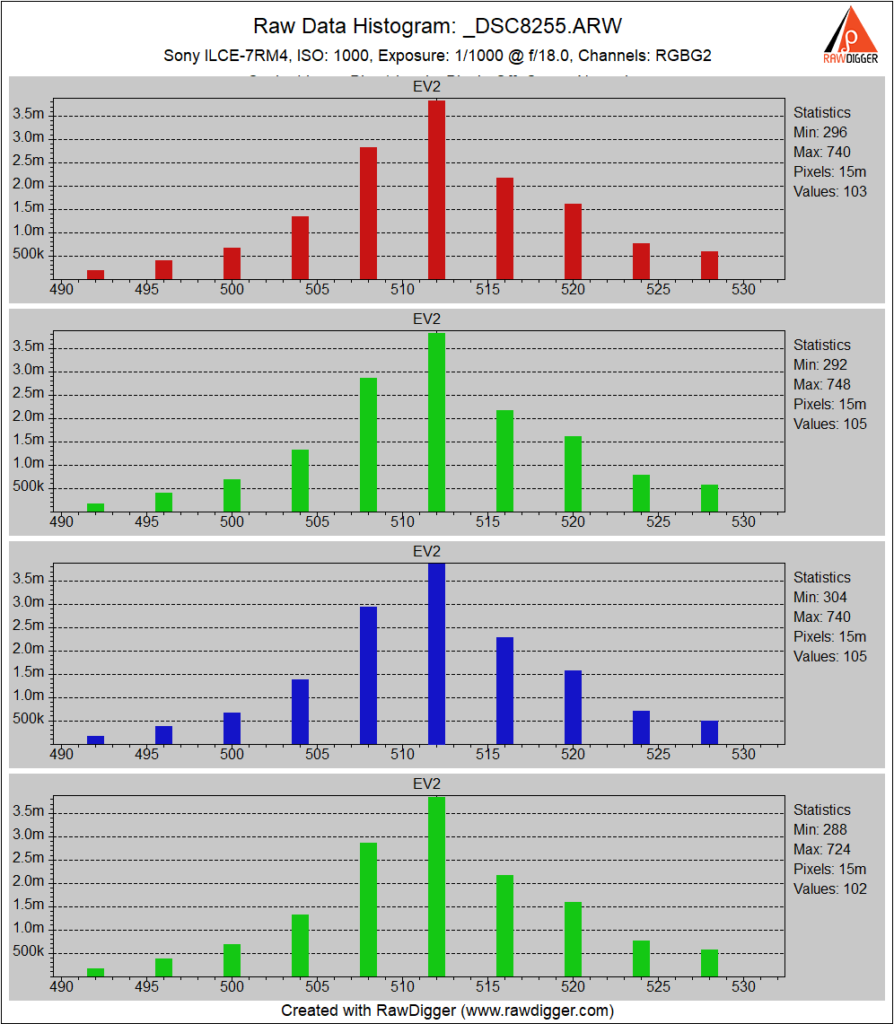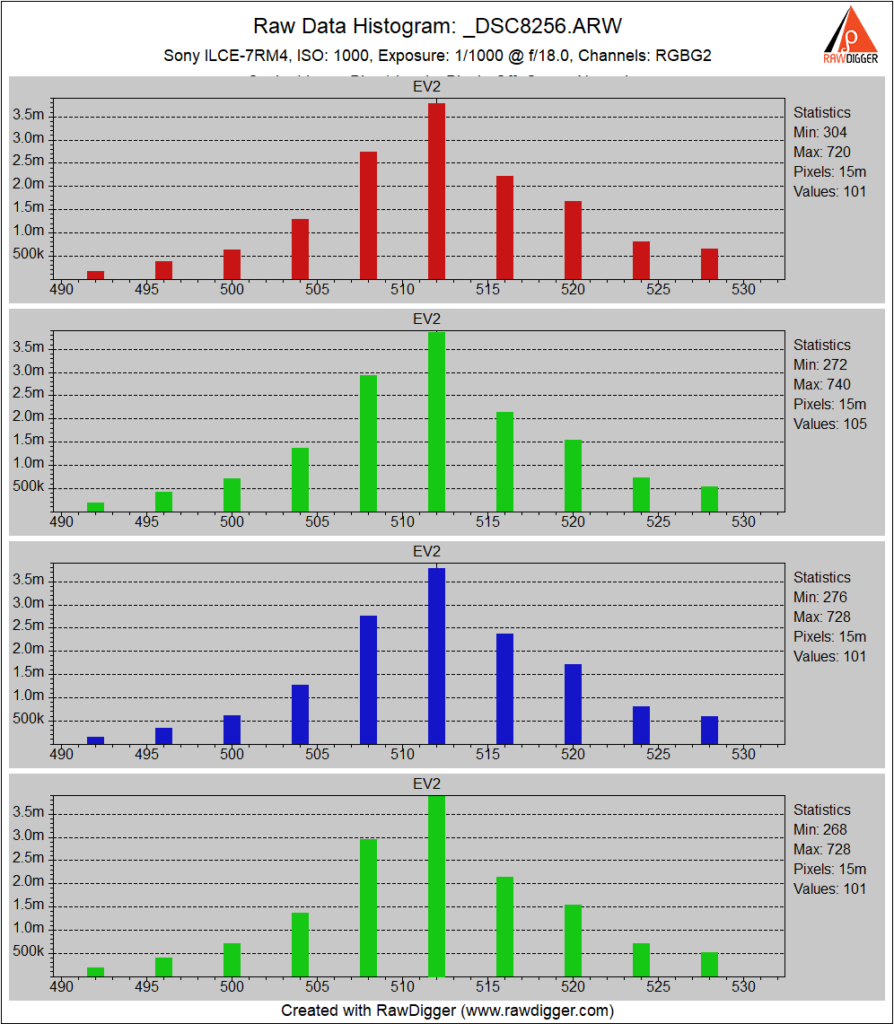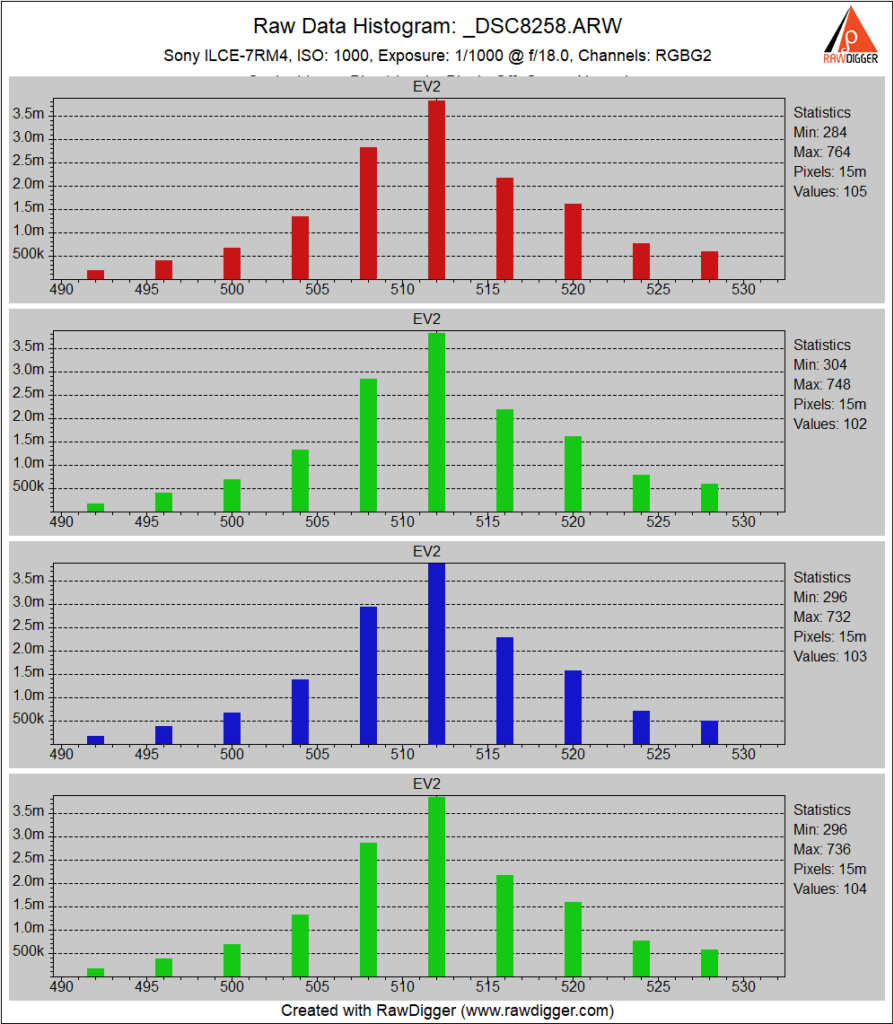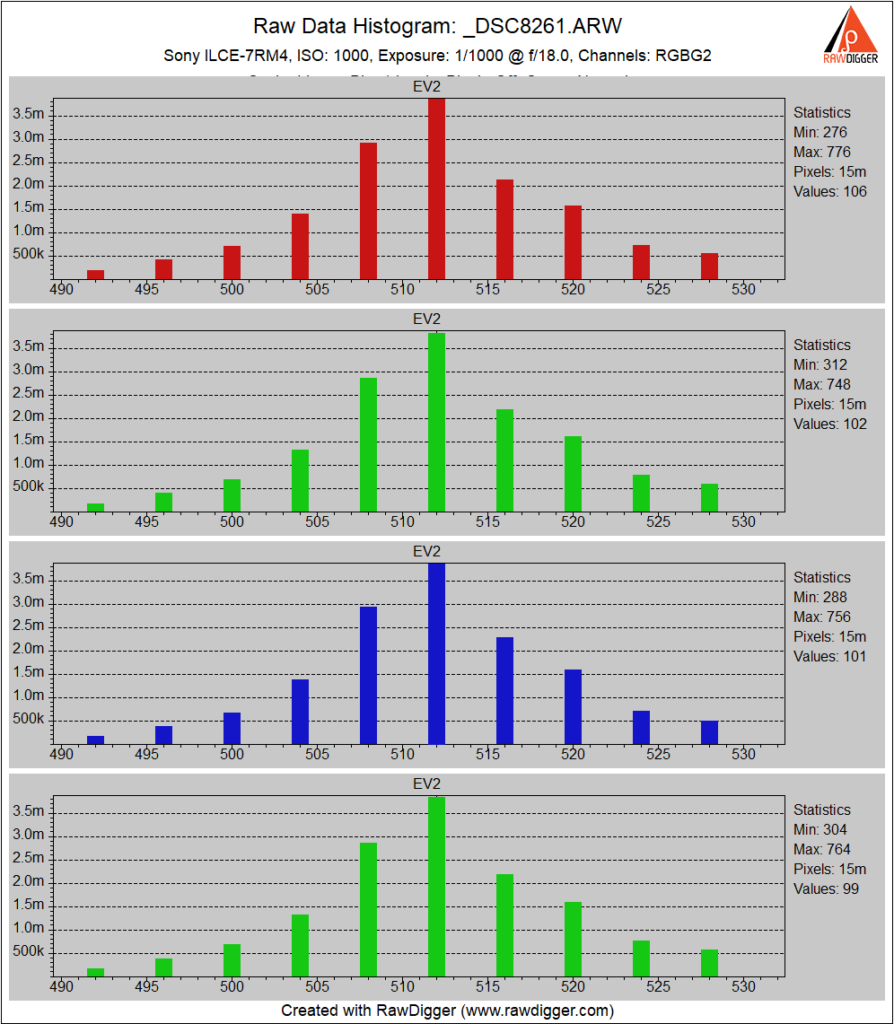A reader asked a question about the Sony a7RIV.
I have a question for clarification. You use the terms “continuous mode,” “continuous compressed,” and “continuous uncompressed.” When I read the Sony A7Riv instruction manual (p.42) it uses the words “Continuous Shooting” to represent 4 different shooting speeds: “Continuous Shooting: Hi+,” “Continuous Shooting: Hi,” “Continuous Shooting: Mid,” and “Continuous Shooting: Low.” Is your conclusion that ALL FOUR of these options cause the camera to shift into 12-bit mode when recording as RAW Compressed? I own both the A7Riv and A7Riii and the Riii manual specifically mentions the change to 12-bit when using Hi+ along with RAW Compressed, so I assumed that Hi, Med and Low would remain as 14-bit.
No such luck. I double-checked today. I set the camera to compressed raw, at ISO 1000 at a shutter speed of 1/1000 second, stopped the lens down, and aimed at a dark place in the room. Then I used RawDigger to plot histograms of the whole frame.




All have 12 bit precision.
Thank you Jim for your valuable work.
So with compressed RAW you get 14bit only in single shot mode, right?
What abot uncompressed RAW, up to which continuos mode do you still get 14 bit?
And if I remember correctly you get 12bit also if you use long exposure noise reduction.
With compressed raw, you never get 14-bit precision. The best you get is 13 bits.
With uncompressed raw, you get 14 bits in all four continuous modes. But you don’t get the speed of the fast compressed modes.
Thanks for the test.
Does the electronic shutter influence that? Are all uncompressed modes 14 bit even with the electronic shutter?
Yes.
https://blog.kasson.com/a7riv/sony-a7riv-edr-vs-raw-format-and-shutter-mode/
Sorry if I missed this somewhere, but what is the impact of bracketing? I assume there’s no impact if uncompressed?
Right.
Hi Jim, in the case of the Sony A7 R IV have you met any reviews about its behavior and performance in long exposure? Does it have the same behavior as its predecessor?
Pretty much.
https://blog.kasson.com/a7riv/a7riv-precision-long-es-exposures/
Hi Jim,
I’m the reader who asked the question originally, and I REALLY want to say thank you for taking the time to research this and respond. Your contributions to learning are deeply appreciated. Thanks!
This is a bit late, but I found this helpful table from Sony.
https://www.sony.com/electronics/support/articles/00229990
That table is wrong. cRaw has 13 bit precision, not 14 bit.
Hello. Any idea how the Sony A1 does when shooting in Hi+ mode? The camera no longer produces a 14 bits lossless raw so I suspect it may drop the bir depth at sensor level to reduce bandwidth and then use compressed raw to pack it up. This is just a wild guess of course
I haven’t tested the A1. Sorry.